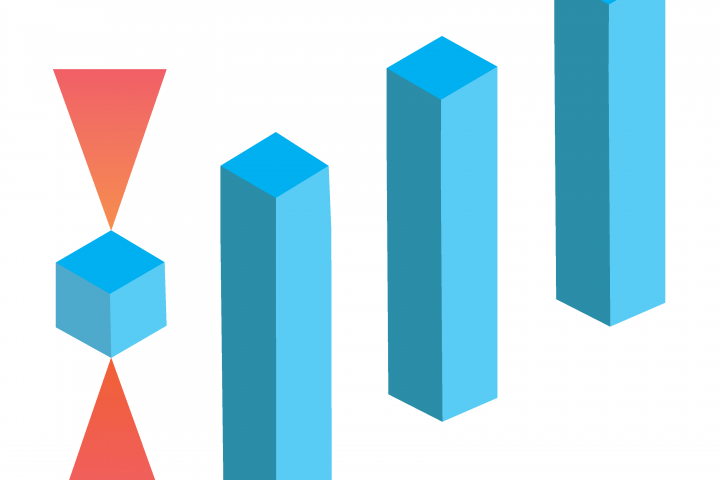This post deals with the a new method for mulimaterials two-photon lithography from the paper entitled “Multimaterial 3D laser microprinting using an integrated microfluidic system” published in Science Advances[1] . Facile integration of multiple photoresists into a multilayer, multimaterial structure has been accomplished by building an automated microfluidic photoresists feeding mechanism which enables smooth functioning of fabrication and development .

This images show the confocal microscopy images of a stacked layers of a complex security feature : A high-resolution 54 x 112 X 112 μm 3D-printed multi-color square security feature. It consists of layers of multi-colored features stacked to make an overall height of 54 μm. Each layer is printed from multiple materials with different colors . This is a complex direct writing task accomplished with the multimaterial direct writing setup developed for this work.
The work flow of typical two-photon lithography (TPL) can be described as follows: Load photoresists>Fabricate>Develop> Image Loading: preparing the photoresist for fabrication Developing: obtaining the cured structures from unwanted precursor In the current scenario if we need to integrate two different materials into a 3D microstructures the fabrication has to be carried out as follows.
Material 1 : Load photoresists>Fabricate>Develop Material 2: Load photoresists>Fabricate>Develop Majority of the works reported on multimaterial TPL studies accomplishes such a task through iterative manual process which produces many challenges in aligning the structures from mutiple materials.
Now the Team from Karlsruhe Insititute of Technology headed by Prof. Martin Wagener has demonstrated a new autosampling system given in Figure 2, that enables smooth, successive introduction of multiple photoresists.
 Figure 2. (a) Shows the feeding mechanism that allows introduction of multiple photoresists into the microfluidic chamber where the fabrication takes place. The setup contains an electronic pressure controller connected to a nitrogen bottle, and up todifferent photoresists and solvents for development. The selection valve allows selection of photoresists/developer. (b) Shows the cross-section of the selection value.
Figure 2. (a) Shows the feeding mechanism that allows introduction of multiple photoresists into the microfluidic chamber where the fabrication takes place. The setup contains an electronic pressure controller connected to a nitrogen bottle, and up todifferent photoresists and solvents for development. The selection valve allows selection of photoresists/developer. (b) Shows the cross-section of the selection value. Figure 3. The orientation of the microfluidic chamber with respect to the fabricating laser. The laser accesses the samples through a transparent substrate place on top of the microfluidic flow.
Figure 3. The orientation of the microfluidic chamber with respect to the fabricating laser. The laser accesses the samples through a transparent substrate place on top of the microfluidic flow.The orientation of the microfluidic chamber with respect to the fabricating laser can be seen in Figure 3. The laser is separated from the microfluidic chamber by a glass window. The the substrate on which the the structure is fabricated is separated from the window using an O-ring.
This ingenious system enables mutiple write-rinse-repeat cycles of different materials. In this work non-fluorescent photoresist was used as a structral support for colored patters. Colored photoresists containing red and orange organic dyses as well as green and blue quantum dots were used for fabricating a complex security feature seen in Figure 1. Finally a video showing stack of multilayer images of the security feature fabricated using this technique can be seen below.
References:
1. .F. Mayer1, S. Richter, J. Westhauser, E. Blasco, C. Barner-Kowollik, .Wegener, Multimaterial 3D laser microprinting using an integrated microfluidic system, Sci. Adv. 2019;5: eaau9160.
*Security feature: a property of a material like currency or a manufactured product that enables detection of counterfeiting. This can be fluorescent marks or structure in the material that helps distinguish the original from fake.






